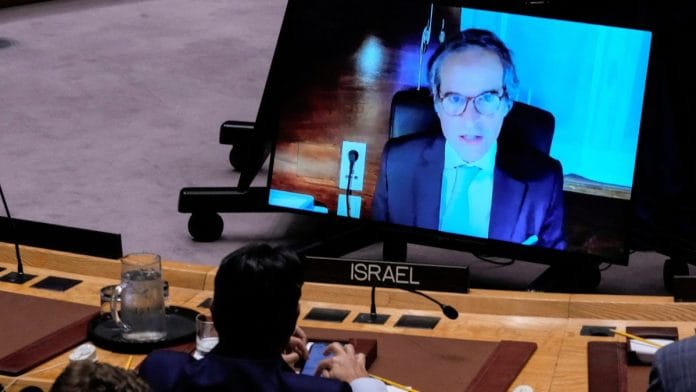New Delhi: The International Atomic Energy Agency (IAEA) has confirmed that Iran’s nuclear facilities in Esfahan and Natanz were targeted in Israeli airstrikes amid escalating tensions between the two countries.
In a post Saturday on its official X handle, the UN nuclear watchdog stated: “Esfahan nuclear facilities were targeted several times on June 13. No increase in off-site radiation levels has been reported as of now. The IAEA remains in close contact with Iran.”
The agency added that it was in “permanent contact” with Iran’s Nuclear Regulatory Authority to assess the condition of the affected facilities and determine any broader implications for nuclear safety and security.
A day before, IAEA Director General Rafael Mariano Grossi briefed the United Nations Security Council (UNSC) on the situation, confirming that contamination had been detected inside the Natanz nuclear facility as a result of the strikes.
“This facility contains the Fuel Enrichment Plant and the Pilot Fuel Enrichment Plant,” Grossi said. “The above-ground section of the Pilot Fuel Enrichment Plant, where Iran was producing uranium enriched up to 60 percent U-235, has been destroyed.”
According to Grossi, key electricity infrastructure at Natanz, including the electrical sub-station, main electric power supply building, emergency power supply, and back-up generators, has also been destroyed.
While the underground cascade hall that houses centrifuges appears to have avoided a direct hit, he warned that the power loss may have damaged the sensitive equipment inside.
“There is no indication of a physical attack on the underground cascade hall,” he said, “but due to the loss of power, the centrifuges may have been damaged.”
Grossi emphasised that despite the internal contamination, there is no indication of increased radiation levels outside the facility, and that external radiological risk to the population and the environment remains unchanged.
The contamination inside the site includes both radiological and chemical elements, primarily alpha particles, which he said are manageable with appropriate radiation protection measures.
Located approximately 220 km southeast of Tehran, Natanz is Iran’s primary uranium enrichment site. Built partly underground on Iran’s Central Plateau, the facility has been at the center of international scrutiny since 2002, when satellite imagery revealed underground construction.
In 2010, Natanz was infamously targeted by the Stuxnet cyber attack, widely attributed to Israeli and US intelligence agencies.
Meanwhile, the Israeli military claimed responsibility for a series of airstrikes targeting what it described as Iran’s “nuclear weapons infrastructure”. In a post on ‘X’, it said that nine Iranian scientists involved in Tehran’s nuclear weapons programme were killed during the strikes.
The escalation comes amid rising tensions between the two countries, with Iran launching a missile barrage at Israel late Friday night in retaliation for the Israeli operation, codenamed Operation Rising Lion.
In response, Iran carried out Operation True Promise 3, during which it fired hundreds of missiles targeting Israeli territory.
(Edited by Viny Mishra)






